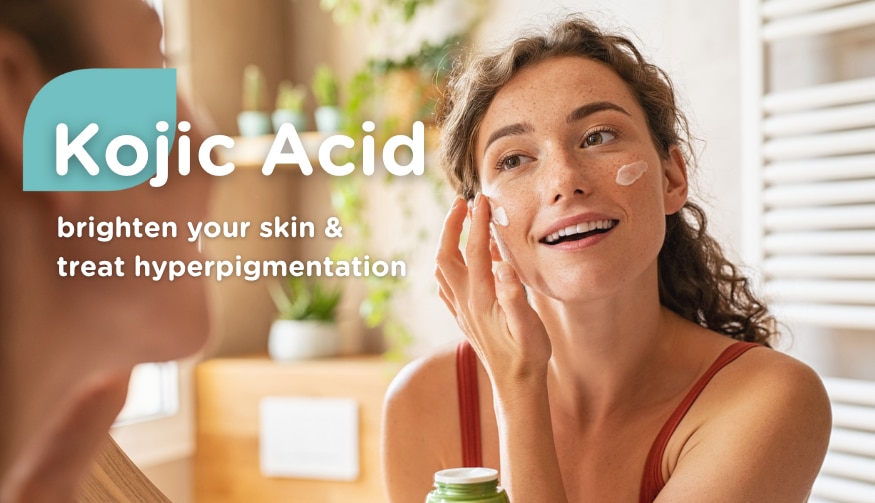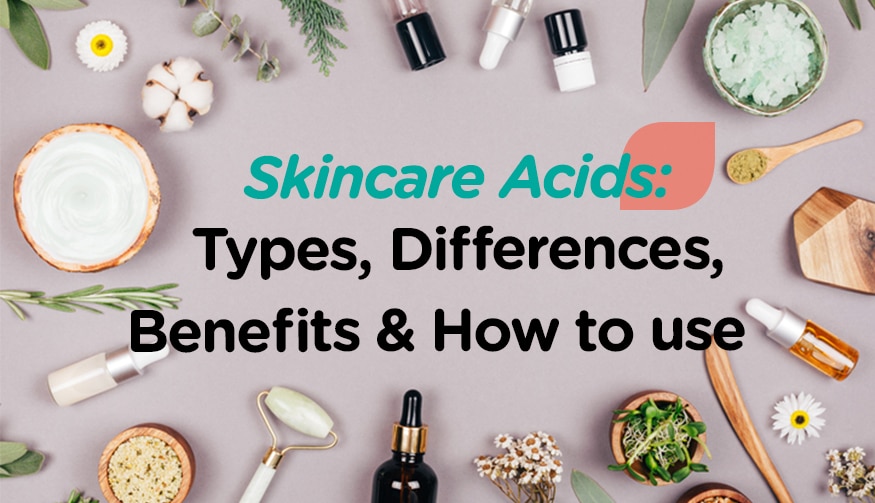Are you looking for an effective skin brightener and hyperpigmentation treatment? Look no further–kojic acid deserves a spot in your skincare routine.
Jump to –>
1. What is it?
2. Effects on skin
3. Benefits
4. Uses
5. Side effects
What is Kojic Acid?
It is naturally derived from certain fermented foods, such as soy sauce, Japanese sake, and various fungi.
What does it do to your skin?
It is a safe and effective skin lightener that targets various skin concerns, including hyperpigmentation, scarring, sun damage, acne scars, and dark spots.

The science behind its effectiveness lies in its ability to decrease melanin production — the natural pigment that gives color to our skin, hair, and eyes. For instance, People with darker skin typically have higher levels of melanin.
Kojic acid works by blocking the enzyme tyrosinase from forming, which is essential for melanin synthesis. Therefore, decreasing melanin production helps lighten and brighten the skin.
Possible Benefits
- Anti-Aging Effects: Reduces the appearance of age spots and sun damage, promoting a more youthful appearance.
- Scar Improvement: Lightens scars, making them less noticeable over time.
- Melasma Treatment: Diminishes dark patches caused by melasma, evening out the skin tone.
- Antifungal Properties: Helps prevent and treat certain fungal infections, such as athlete’s foot and yeast infections.
- Antibacterial Effects: Reduces the risk of developing common bacterial skin infections.
Uses of Kojic Acid Products
Kojic acid can be found in a variety of facial and body skincare products, such as soaps, serums, and moisturizers. Generally, it is safe for daily use. However, if you apply them in the morning, be sure to follow up with sunscreen to protect your skin from UV damage.
Side Effects
Kojic acid is generally well-tolerated compared to many other acids, but allergic reactions or irritation can occur. Specifically, possible side effects include redness, irritation, itchiness, rashes, swelling, and discomfort or pain, particularly with products containing concentrations higher than 1% of kojic acid.
*If you experience any adverse reactions, discontinue use immediately.
Find out more on:
Instagram: Watsons Thailand (@watsonsth)
YouTube: Watsons Thailand (@watsonsthailand)












